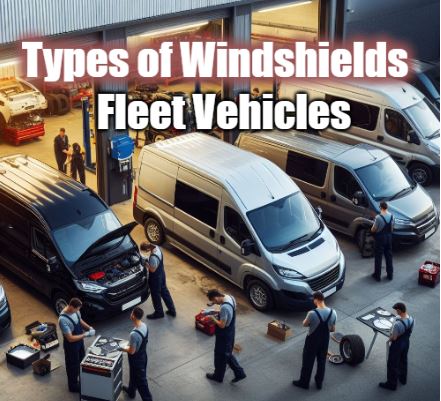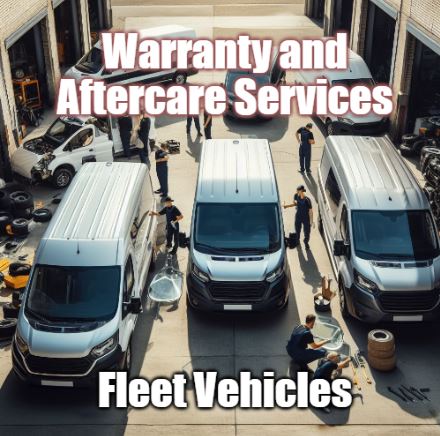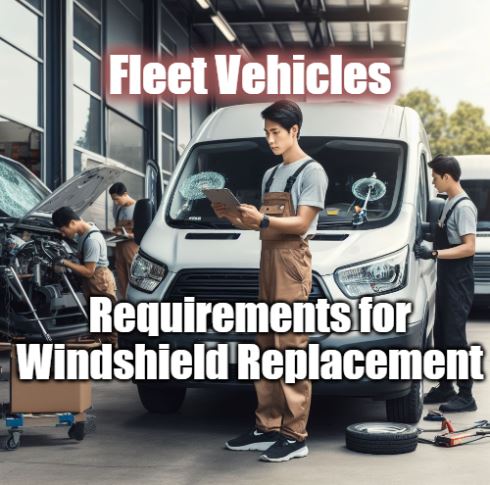When it comes to maintaining fleet vehicles, one critical aspect that often gets overlooked is the windshield. Unlike personal vehicles, fleet vehicles have unique requirements when it comes to windshield replacement. This article delves into these special requirements, offering insights and guidelines to ensure your fleet remains safe and compliant.
Understanding Fleet Vehicle Windshield Needs
Fleet vehicles are not just transportation means; they are mobile representations of your business. The demands placed on these vehicles are significantly higher than personal cars. They face constant use, varying road conditions, and often carry valuable cargo or passengers. This necessitates a more robust approach to windshield maintenance and replacement. For more specific insights, explore our detailed guide on Commercial Vehicle Specifics.
Increased Wear and Tear
Fleet vehicles are frequently used for long hours, often in challenging conditions such as heavy traffic, construction sites, or rural areas with rough roads. This constant use can lead to more frequent chips, cracks, and general wear and tear on the windshield.
Safety and Visibility
For fleet vehicles, a clear and undamaged windshield is vital for driver safety. These vehicles often carry goods, equipment, or passengers, making the need for unobstructed visibility and structural integrity of the windshield even more critical. Any compromise in visibility can lead to increased risks on the road.
Regulatory Compliance
Fleet vehicles are subject to stringent regulations, including those related to windshield condition. A cracked or improperly installed windshield can lead to fines, vehicle downtime, and even legal issues, especially if it contributes to an accident.
Brand Image and Professionalism
Fleet vehicles often serve as mobile advertisements for a business. A well-maintained vehicle, including a pristine windshield, projects a professional image and shows a commitment to safety and quality.
Economic Considerations
For businesses, fleet vehicles are significant investments. Ensuring that windshields are properly maintained and replaced when necessary is not just a matter of safety but also of economic sense. Preventative maintenance can save costs in the long run by avoiding more significant repairs and keeping vehicles on the road.
Specialized Requirements
Depending on the type of fleet vehicle, there may be specialized requirements for windshields. Heavy-duty vehicles might need thicker, more durable glass, while vehicles operating mostly at night might benefit from anti-glare coatings.
Types of Windshields for Fleet Vehicles

Not all windshields are created equal. Fleet vehicles may require stronger, more durable glass, or windshields with special coatings for enhanced visibility. Choosing the right type of windshield is crucial for the longevity and safety of your fleet. Discover the options available in our article on Exploring Different Windshield Types.
Standard Laminated Glass
The most common type of windshield glass is laminated safety glass. This glass is made by bonding two sheets of glass with a layer of polyvinyl butyral (PVB) in between. This construction ensures that if the glass breaks, it holds together, reducing the risk of injury from sharp shards. Laminated glass also provides a level of UV protection and sound insulation.
Tempered Glass
Some fleet vehicles, especially in specific industries, might use tempered glass for side and rear windows. This glass is treated with heat or chemicals to increase its strength. When it breaks, it shatters into small, rounded pieces, which are less dangerous than sharp shards. However, for windshields, laminated glass is generally preferred due to its shatter-proof nature.
Tinted and Coated Glass
For fleets operating in regions with intense sunlight, tinted or coated windshields can be a wise choice. These windshields reduce glare and block out harmful UV rays, making driving more comfortable and protecting the interior of the vehicle from sun damage. However, it’s important to be aware of the legal tint limits in your area.
Heated Windshields
In colder climates, heated windshields can be a game-changer. These windshields have thin wires or a conductive layer embedded in them, which can be heated to quickly defrost or demist the glass. This feature enhances safety by improving visibility in frosty conditions.
Acoustic Windshields
For fleets operating in noisy environments or where driver comfort is a priority, acoustic windshields are an excellent option. These windshields have a special layer in the laminated glass that significantly reduces the transmission of external noise.
Windshields with Advanced Technologies
Some modern windshields come equipped with advanced technologies like heads-up displays (HUDs), rain sensors, and connectivity features that can integrate with other vehicle systems. While these features offer enhanced convenience and safety, they also require specialized installation and maintenance.
Custom Solutions
Depending on the specific needs of the fleet, custom windshield solutions might be necessary. This could include windshields with specific dimensions, shapes, or additional features tailored to the unique requirements of certain vehicles or industries.
Understanding the Warranty and Aftercare Services

Finally, understanding the warranty and aftercare services available for your fleet’s windshields can provide peace of mind and save costs in the long run. Ensure you know what your warranty covers and what additional services you can avail of. For more information, visit our section on Warranty Information.
Warranty Coverage
Most windshield replacement services offer a warranty on both the glass and the installation. It’s important to understand what is covered under this warranty. Typically, it includes defects in the glass, such as bubbles or waves, and issues with the installation, like leaks or wind noise. However, it usually does not cover damage from external sources like accidents or environmental damage. Fleet managers should clarify the duration of the warranty and any conditions or exclusions that apply.
Extended Warranties and Service Plans
Some service providers offer extended warranties or service plans for an additional cost. These plans may provide broader coverage or longer protection periods. Depending on the usage and routes of the fleet vehicles, investing in an extended warranty or service plan can be a cost-effective decision in the long run.
Aftercare Services
After the windshield has been replaced, proper aftercare is crucial to ensure its longevity and effectiveness. This includes following the service provider’s guidelines on how long to wait before driving the vehicle, how to care for the new windshield in the first few days, and when to remove any retention tape. Some providers also offer complimentary aftercare services, such as free chip repairs for a certain period post-installation.
Windshield replacement for fleet vehicles involves more than just fixing broken glass. It requires an understanding of the unique needs of these vehicles, adherence to safety standards, and knowledge of insurance and warranty specifics. By following these guidelines and utilizing the resources provided, fleet managers can ensure their vehicles remain safe, compliant, and ready for the road.
Content reviewed and published by SLP AutoGlass Editorial Team.

